

Is Jupiter Eating Its Own Heart? Jupiter is the victim of its own success.
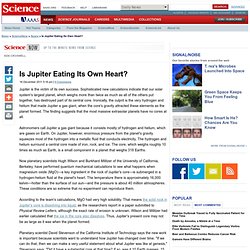
Sophisticated new calculations indicate that our solar system's largest planet, which weighs more than twice as much as all of the others put together, has destroyed part of its central core. Ironically, the culprit is the very hydrogen and helium that made Jupiter a gas giant, when the core's gravity attracted these elements as the planet formed. The finding suggests that the most massive extrasolar planets have no cores at all. Astronomers call Jupiter a gas giant because it consists mostly of hydrogen and helium, which are gases on Earth. [1111.6309] Rocky core solubility in Jupiter and giant exoplanets. The race to create the bionic eye. By Anthony Hall, Associate Professor, Monash University The path to development of the bionic eye is blindingly clear but progress is slow.
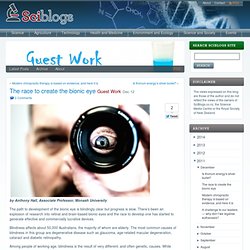
There’s been an explosion of research into retinal and brain-based bionic eyes and the race to develop one has started to generate effective and commercially lucrative devices. Blindness affects about 50,000 Australians, the majority of whom are elderly. The most common causes of blindness in this group are degenerative disease such as glaucoma, age-related macular degeneration, cataract and diabetic retinopathy. The effect of the Foo Fighters on the human body and seismic activity.
How does a rock concert affect the human body and how much seismic activity does such a concert produce?
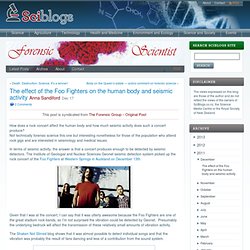
Not technically forensic science this one but interesting nonetheless for those of the population who attend rock gigs and are interested in seismology and medical issues. In terms of seismic activity, the answer is that a concert produces enough to be detected by seismic detectors. The Institute of Geologial and Nuclear Sciences Geonet seismic detection system picked up the rock concert of the Foo Fighters at Western Springs in Auckland on December 13th. Mass effect: Maybe Higgs, maybe not. Today, scientists at CERN in Geneva announced their results for their search for the Higgs boson, a subatomic particle that, if it exists, is thought to be responsible for giving other particles mass.
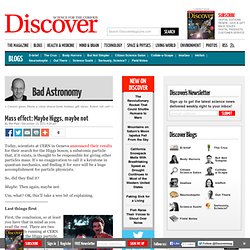
It’s no exaggeration to call it a keystone in quantum mechanics, and finding it for sure will be a huge accomplishment for particle physicists. So, did they find it? Maybe. Then again, maybe not. Higgs Update Today: Inconclusive, As Expected. Sciblogs Events.
Prime Minister’s $1 million science prizes presented. Prime Minister’s $1 million science prizes presented The Prime Minister’s Science Prizes, which combine recognition and prize money of $1 million, have been presented in Auckland today.
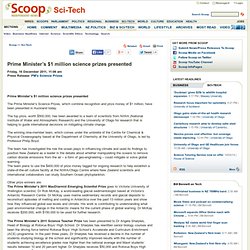
Oceanographers win PM’s science prize for climate work. PM’s Science Teacher Prize: Dr Angela Sharples. The Prime Minister’s Science Prizes were announced today, & among the winners was my good friend & colleague Angela Sharples, who was awarded the Science Teacher Prize.
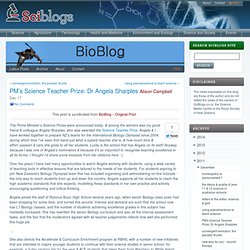
Angela & I have worked together to prepare NZ’s teams for the International Biology Olympiad since 2004, during which time I’ve seen first-hand just what a superb teacher she is, & how much time & effort, passion & care she gives to all her students. Lucky is the school that has Angela on its staff! Anyway, because I was one of Angela’s nominators & because it’s so important to recognise teaching excellence in all its forms, I thought I’d share some excerpts from her citations here :-) Over the years I have had many opportunities to watch Angela working with students, using a wide variety of teaching tools in effective lessons that are tailored to the needs of her students.
Bees reach consensus by headbutting dissenters. The human brain is wonderfully complex.
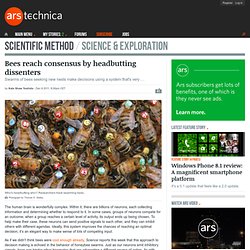
Within it, there are billions of neurons, each collecting information and determining whether to respond to it. In some cases, groups of neurons compete for an outcome; when a group reaches a certain level of activity, its output ends up being chosen. To help make their case, these neurons can send positive signals to each other, and they can inhibit others with different agendas. Ideally, this system improves the chances of reaching an optimal decision; it’s an elegant way to make sense of lots of competing input. As if we didn't think bees were cool enough already, Science reports this week that this approach to decision making is echoed in the behavior of honeybee swarms. Yeti crab grows its own food. In the deep ocean off the coast of Costa Rica, scientists have found a species of crab that cultivates gardens of bacteria on its claws, then eats them.

The yeti crab — so-called because of the hair-like bristles that cover its arms — is only the second of its family to be discovered. The first — an even hairier species called Kiwa hirsuta — was found in 2005 near Easter Island1. Andrew Thurber Yeti crabs living around deep-sea methane seeps cultivate the bacteria on which they feed. Andrew Thurber, a marine ecologist now at Oregon State University in Corvallis, identified the second species a year later. Writing in PLoS ONE2 this week, Thurber named the crab Kiwa puravida, after a common Costa Rican saying that means 'pure life'. “Those of us who work in the deep sea expect to discover a strange new species every time we dive,” says Cindy Van Dover, a marine ecologist at Duke University Marine Laboratory in Beaufort, North Carolina. Ocean waves.